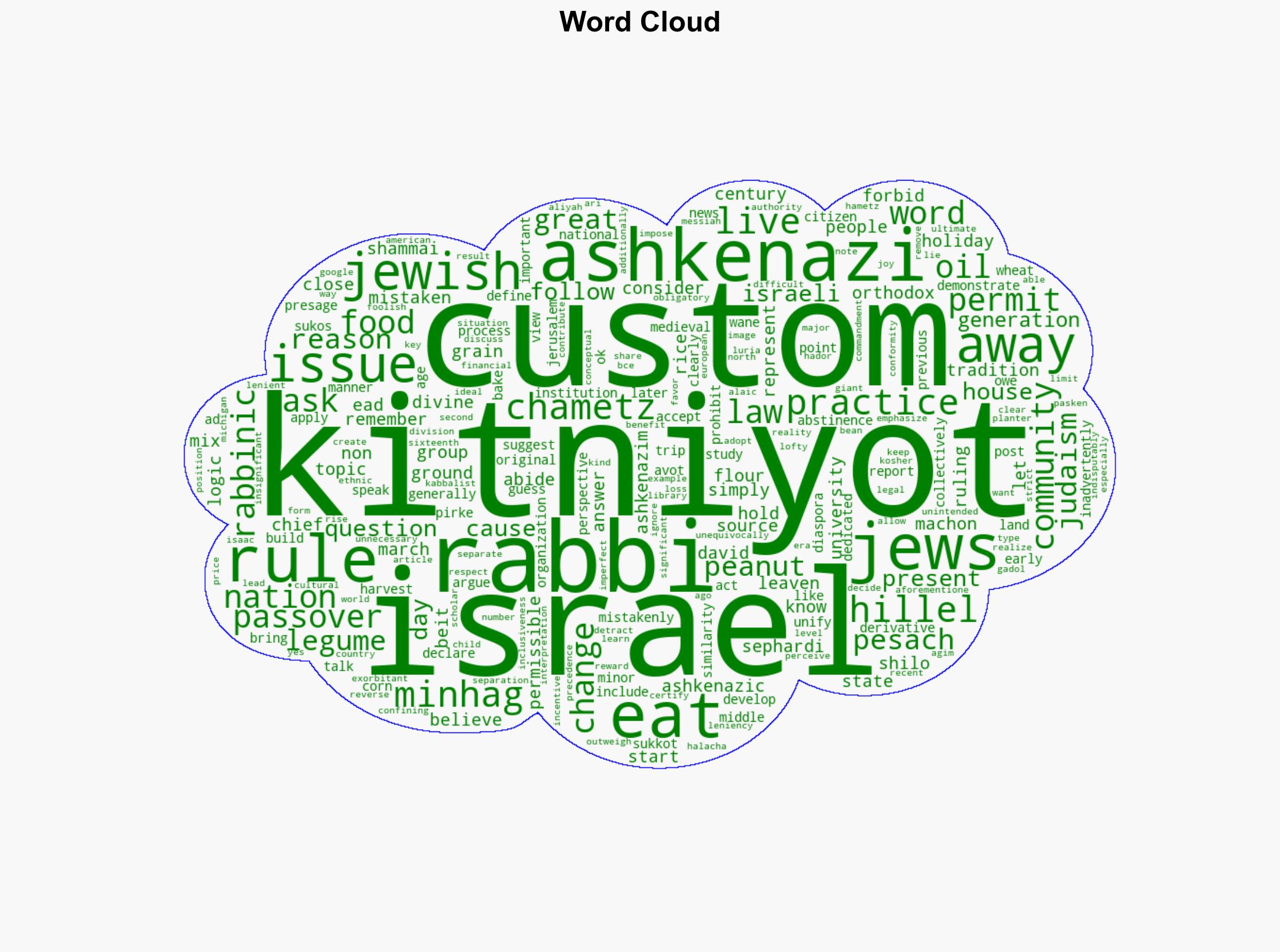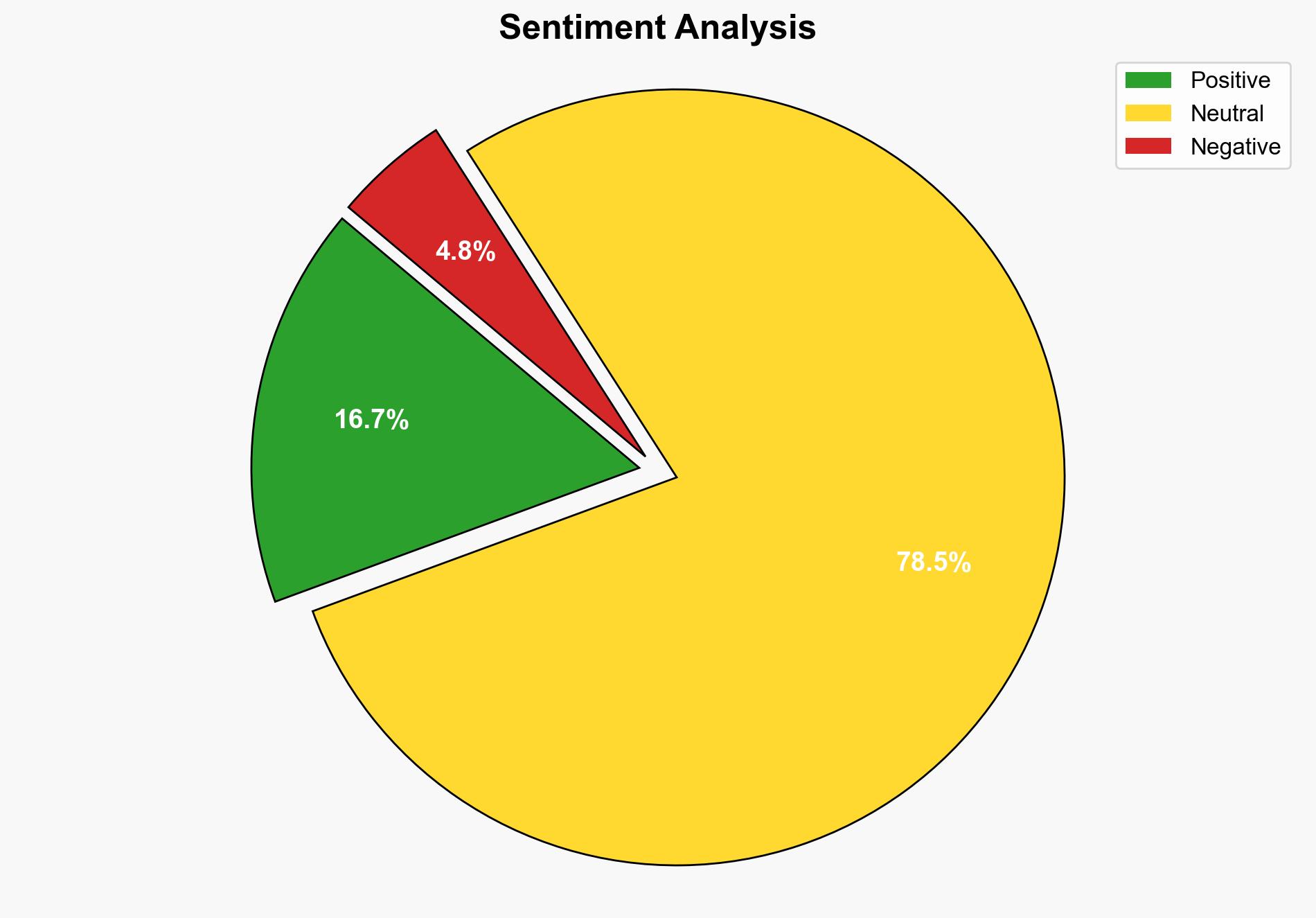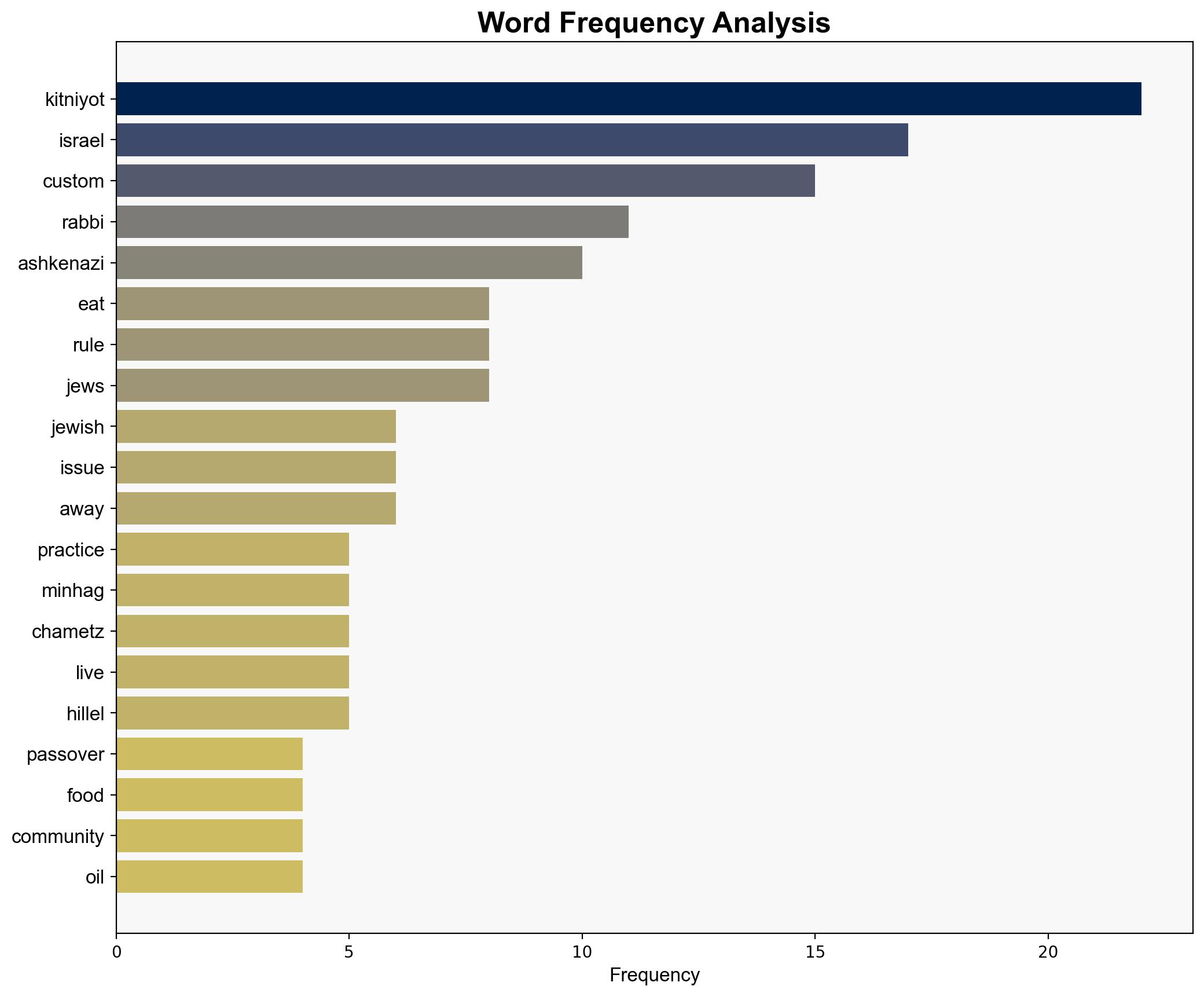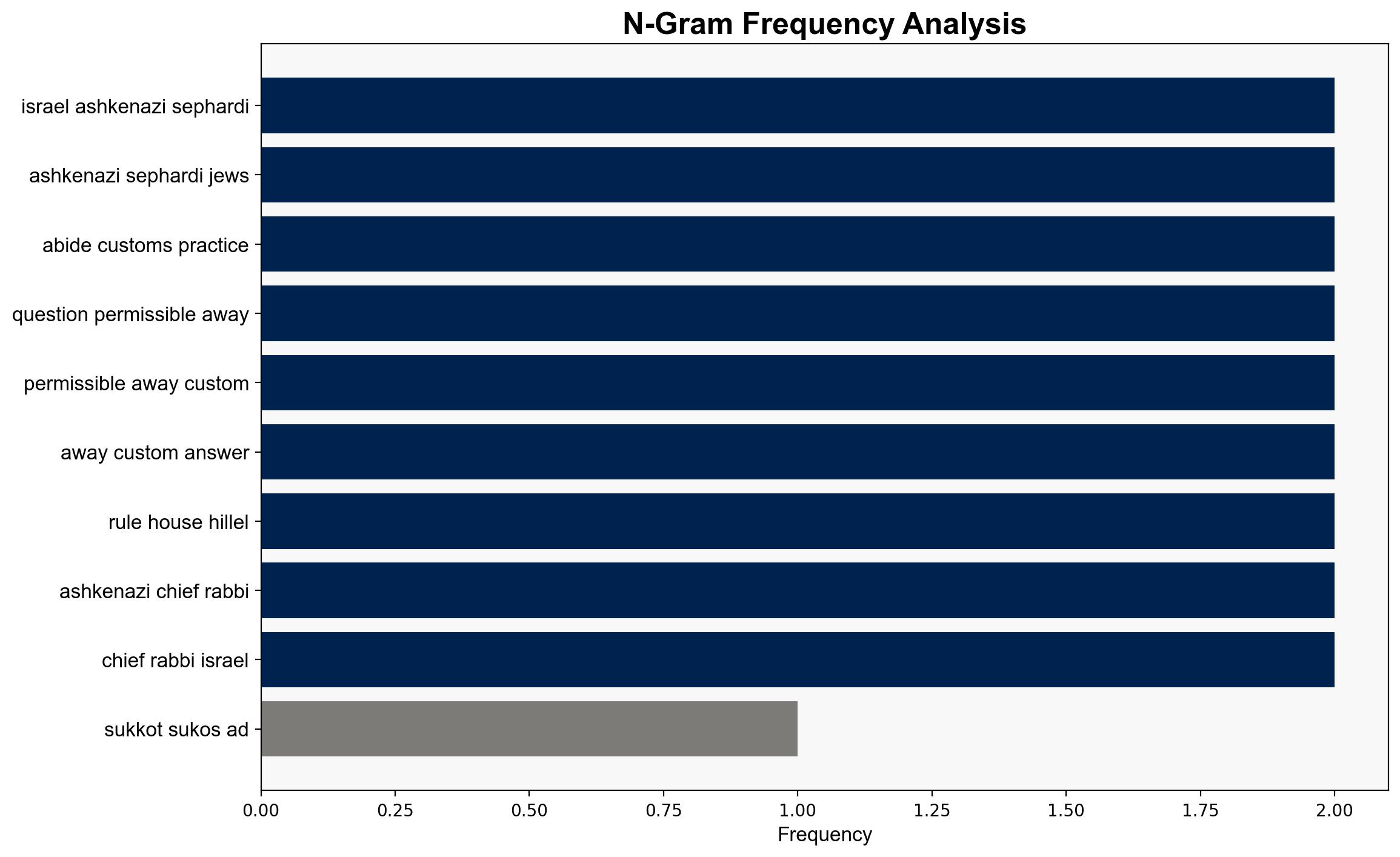Can we talk about kitniyot – Israelnationalnews.com
Published on: 2025-10-28
Intelligence Report: Can we talk about kitniyot – Israelnationalnews.com
1. BLUF (Bottom Line Up Front)
The debate over the consumption of kitniyot during Passover highlights a potential shift in Jewish customs, particularly among Ashkenazi communities in Israel. The most supported hypothesis suggests that there is a growing trend towards unifying Jewish customs in Israel, which could reduce ethnic divisions. Confidence in this hypothesis is moderate due to the complexity of religious and cultural dynamics. It is recommended to monitor this trend for its potential to influence broader social cohesion in Israel.
2. Competing Hypotheses
Hypothesis 1: There is a growing movement within Israel to unify Jewish customs, leading to increased acceptance of kitniyot consumption among Ashkenazi Jews during Passover. This is driven by a desire for national unity and reduction of ethnic divisions.
Hypothesis 2: The debate over kitniyot remains largely symbolic, with traditional Ashkenazi customs continuing to prevail due to deep-rooted cultural and religious beliefs, despite some calls for change.
3. Key Assumptions and Red Flags
Assumptions:
– Hypothesis 1 assumes that national unity is a stronger motivator than traditional adherence.
– Hypothesis 2 assumes that cultural and religious traditions are resistant to change.
Red Flags:
– Potential bias in reporting from sources advocating for change.
– Lack of quantitative data on the actual shift in customs.
– Possible underestimation of resistance from conservative religious factions.
4. Implications and Strategic Risks
The shift towards unified customs could enhance social cohesion in Israel, reducing ethnic tensions. However, it may also provoke backlash from traditionalist groups, potentially leading to increased cultural polarization. Economic implications include potential impacts on food markets during Passover if kitniyot becomes more widely accepted.
5. Recommendations and Outlook
- Monitor religious and cultural discourse in Israel to assess the trajectory of this trend.
- Engage with community leaders to understand grassroots perspectives and potential resistance.
- Scenario Projections:
- Best Case: Unified customs lead to greater national unity and reduced ethnic tensions.
- Worst Case: Cultural backlash exacerbates divisions, leading to social unrest.
- Most Likely: Gradual acceptance of kitniyot with pockets of resistance.
6. Key Individuals and Entities
– Machon Shilo: An organization advocating for the acceptance of kitniyot.
– Ashkenazi and Sephardi Jewish communities in Israel.
7. Thematic Tags
cultural dynamics, religious customs, social cohesion, ethnic relations




